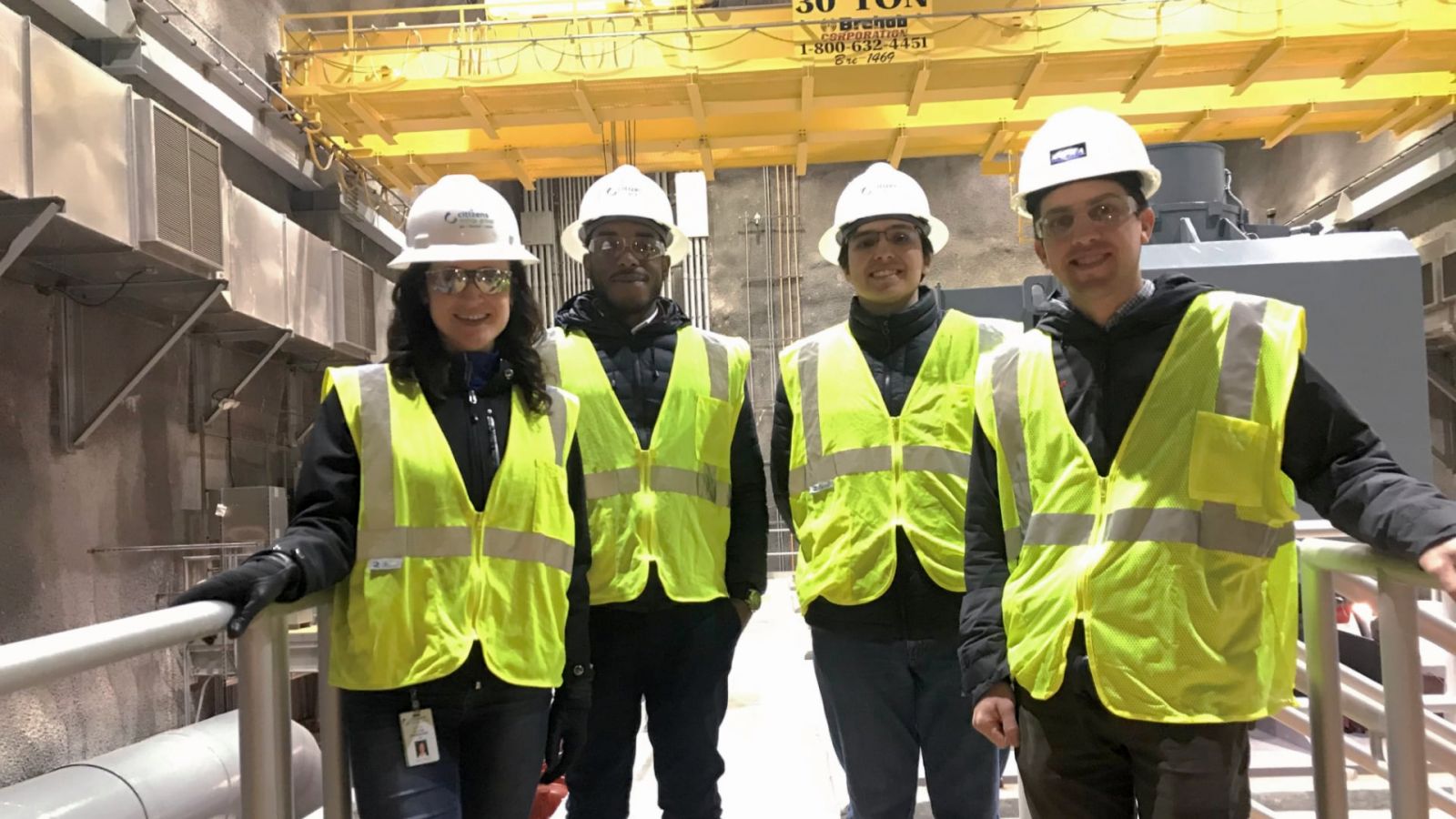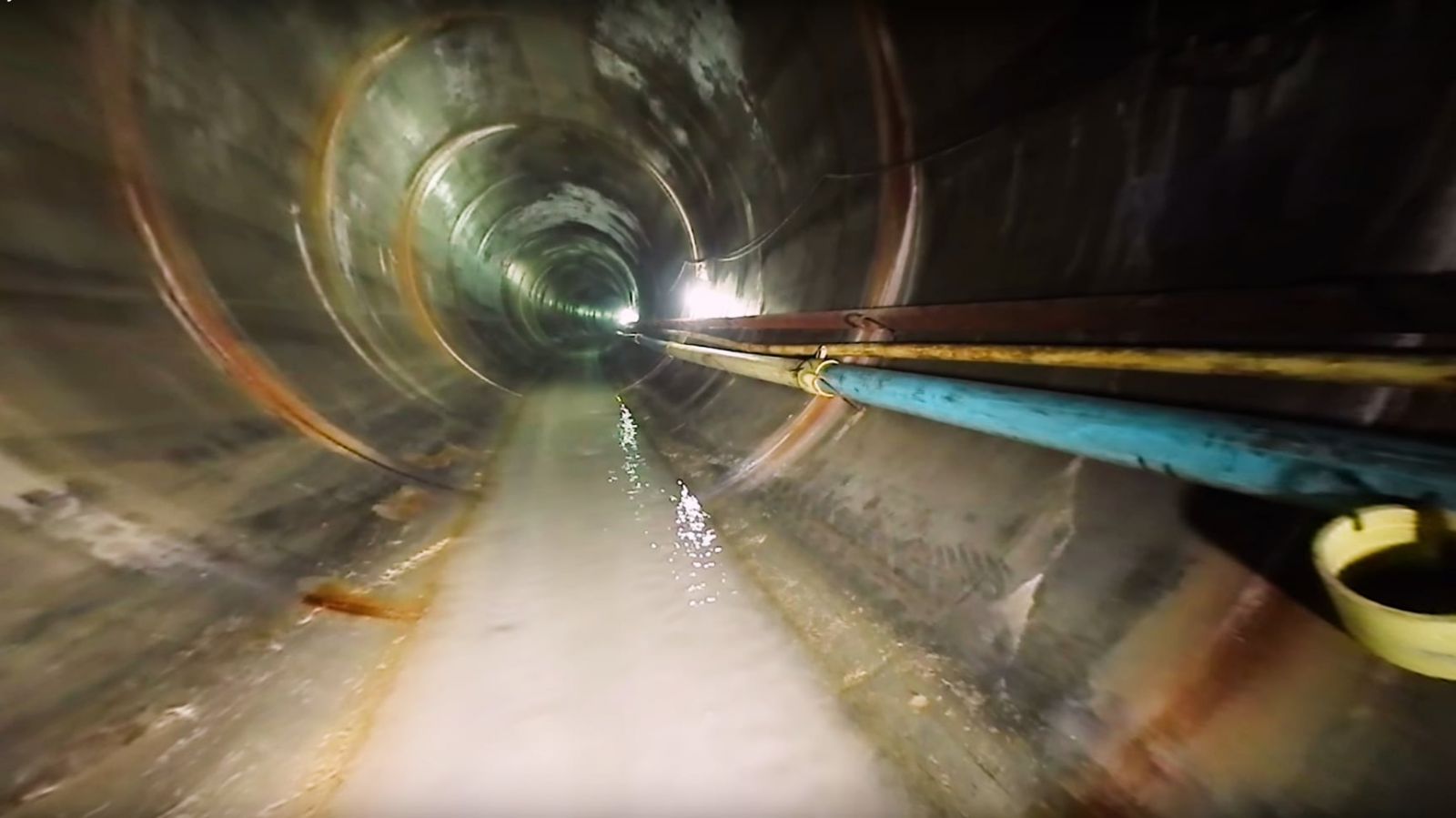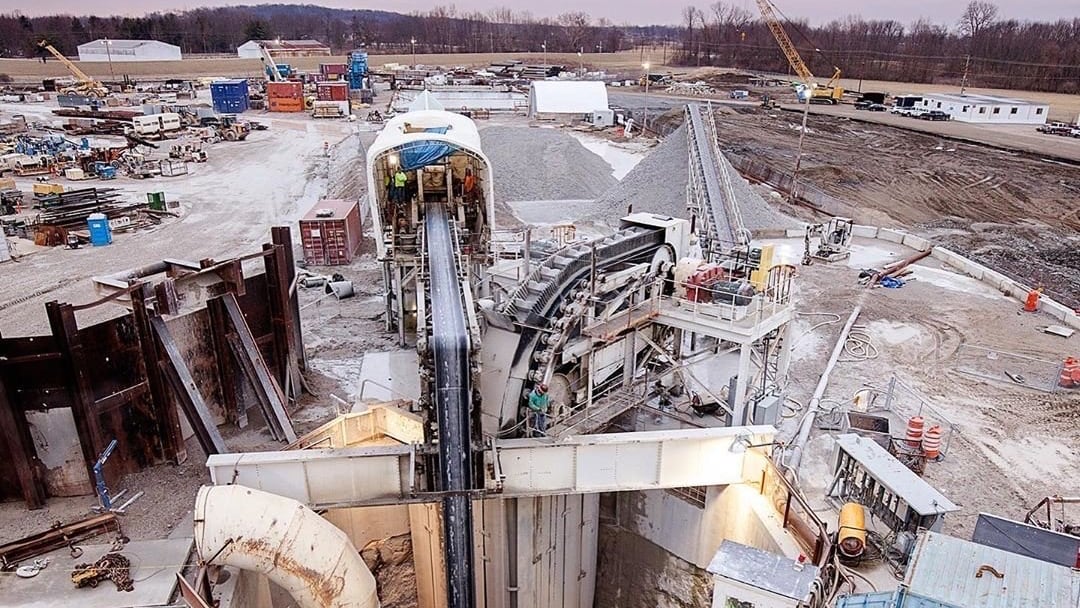See “Underground weather forecast: 0% chance of stink” for a January 27, 2021, update to this research.

Researchers in Purdue Polytechnic’s School of Engineering Technology are helping a utility company make sure its new sewage storage system passes the smell test.
As cities throughout the Midwest build huge underground tunnels to store sewage and reduce the amount of combined sewage overflow (CSO) that enters public waterways, they’re also trying to prevent the storage systems from being detectable by the noses of people who live or play near ventilation points.
 Jason Ostanek, assistant professor of engineering technology and director of Purdue’s Applied Thermofluids Laboratory, has created a partnership with Citizens Energy Group to study air flow in the DigIndy Tunnel System, a 28-mile network of 18-foot diameter CSO storage tunnels being built 250 feet below Indianapolis. The research is part of Citizens Energy Group’s Partnership for Excellence in Research and Learning (PERL), an initiative with universities and industry partners to foster greater student engagement through collaboration on real-world projects.
Jason Ostanek, assistant professor of engineering technology and director of Purdue’s Applied Thermofluids Laboratory, has created a partnership with Citizens Energy Group to study air flow in the DigIndy Tunnel System, a 28-mile network of 18-foot diameter CSO storage tunnels being built 250 feet below Indianapolis. The research is part of Citizens Energy Group’s Partnership for Excellence in Research and Learning (PERL), an initiative with universities and industry partners to foster greater student engagement through collaboration on real-world projects.
Under dry conditions, sewage is pumped to a treatment facility and returned as clean water to area waterways. A rainy day, however, can play havoc with the system. With as little as a quarter-inch of rain, systems not designed to separate storm water from sewage can send more water to the treatment facility than it is able to process without discharging untreated sewage into public waterways, creating a public health and environmental risk. Once completed, DigIndy will capture up to 97% of CSO, store it until heavy rain has subsided, and then pump it to a separate water treatment plant.
Ostanek and student researchers in the Applied Thermofluids Laboratory (AFTL) are developing a digital twin model of the DigIndy Tunnel System. The model includes a 3D reconstruction of the tunnel network and a computational fluid dynamics (CFD) model for studying air flow within the system. Weather stations placed at each of the networks’ ventilation points will collect data for the CFD model, including wind speed and direction, rainfall history, temperature and relative humidity. Ostanek and his ATFL research team aim to predict the direction and magnitude of air circulation under different seasonal and environmental conditions, essentially creating an “underground DigIndy weather forecast” that Citizens Energy hopes will help them understand and mitigate risk of odor problems near ventilation points in residential or recreational areas.
We spoke with Ostanek about the project and his partnership with Citizens Energy.
Question: Would you please share a bit of detail about the techniques you and your team will use to do the 3D reconstruction of the DigIndy network?
Jason Ostanek: We are working on this right now. The first phase of the project involves collecting drawings and other details of the system. We are using Google Maps with a special “overlay” which shows us the locations of the tunnels and all openings (vent shafts and drop shafts). A drop shaft is where the water drops down into the tunnel, and a vent shaft is purely for air relief.
We have also received engineering drawings of junctions, vent shafts, drop shafts, and other important features of the tunnel.

Question: When do you expect your digital twin model will be ready for Citizens to use?
Ostanek: It’s a one-year research project. Sometime in the spring, we will be validating our model against experiments. Also, we must wait long enough to have experimental data collected from our weather stations to compare with our digital twin model. Successful validation would result in our digital twin model predicting the air circulation flow rate and direction.
Question: How did this research partnership with Citizens Energy get started?
Ostanek: I worked with Citizens Energy on a Purdue Technical Assistance Program (TAP) project during the summer of 2018. The project was aimed at recommending possible modeling and simulation efforts which could help Citizens as they move forward. Emad Elwakil, associate professor of construction management technology, and I received a seed grant from Purdue Polytechnic’s Office of Research to conduct a preliminary simulation to look at a special scenario called “geysering,” another risk that Citizens was hoping to avoid.
Based on these two preliminary efforts (TAP and the seed grant), Citizens and I began talking about a research agreement. We iterated on the scope of work and reached an agreement for a research grant to study air flow under empty fill conditions.
Question: How will students who work with you in the ATFL be involved in this research project?
Ostanek: Luis Maldonado and Jhon Quiñones are working on the project. Having two students working together stimulates teamwork and creativity.
Luis was a visiting scholar in my lab during summer 2019, and he will start pursuing his master’s degree in spring 2020. His thesis will focus on the Citizens project.
Jhon is a doctoral student on a Fulbright Scholarship. Through this research, he is gaining experience using CFD tools to solve industrial problems. Jhon’s dissertation will focus on renewable energy, specifically hydrokinetic water turbines for power generation.
This type of real-world experience is very important to me and to students at Purdue. Using state-of-the-art technology — in this case, CFD simulation software — to gain insight into physical problems and to inform stakeholders is one of the missions of the Polytechnic Institute.

Question: You mention that Citizens will use your digital twin model to understand and mitigate risk associated with undesirable circulation patterns. That means controlling potential odors from the underground tunnels at their ventilation points, right? How might that work?
Ostanek: You are correct. One example of a mitigation would be to close off or open up new ventilation points. Or, in the extreme, the design of a tunnel may be modified. The tunnel system is currently under construction, and there is still a possibility that Citizens could modify the design of the remaining, unbuilt segments if they determine there is a risk to odor control.
Question: Have you either already experienced any surprises or challenges so far? How have you adapted to solve the problem?
Ostanek: This is a challenging problem, mainly in the lack of available data with which to calibrate our models. It is difficult to relate what is happening on the street level to what is happening in the tunnel network. We are making some assumptions about the local climatic conditions at each vent shaft to prescribe a boundary condition to our digital twin model.
Another challenge is that there is a constant inflow of clear water, just from seepage through the concrete liner of the tunnel. We know that the tunnel will be very humid, and the humidity may be one of the factors which drives air flow. We plan to account for this in our model, but it is still challenging to capture.
Finally, we are working with other experts at Citizens Energy and here at Purdue. For example, we are working with Emad Elwakil on this project. Emad has extensive experience with different types of failures analysis for pipelines and tunnels. Emad brings a unique perspective on reliability of underground structures.

Additional information:
- Underground weather forecast: 0% chance of stink
- DigIndy (Citizens Energy Group)
- Partnership for Excellence in Research & Learning (PERL) (Citizens Energy Group)
- Applied Thermofluids Laboratory (Purdue Polytechnic)
